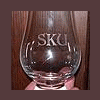There are now more whiskey distilleries in the US Than in Scotland
This topic has been inactive for at least 365 days, and is now closed. Please feel free to start a new thread on the subject!

By
sku
in General Bourbon Discussion
By using this site, you agree to our Terms of Use.
Recommended Posts